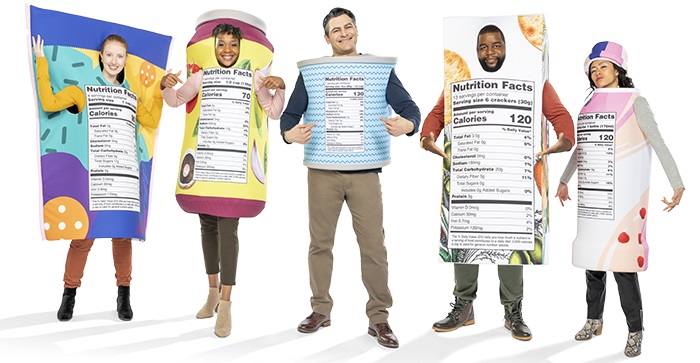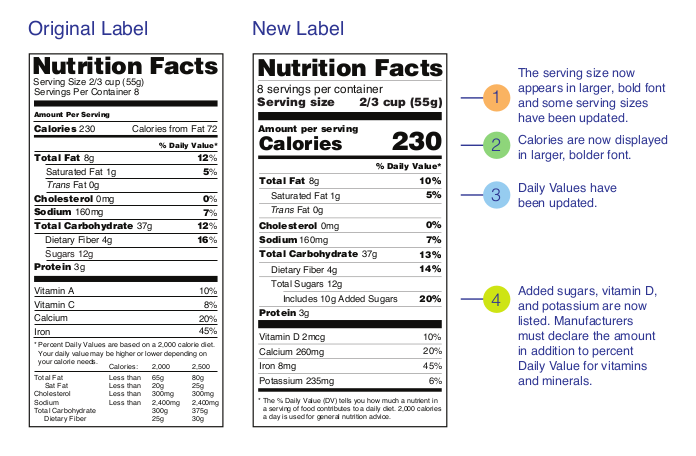Make informed food choices with the U.S. Food and Drug Administration’s updated Nutrition Facts label! The updated label can help you make food choices that contribute to lifelong healthy eating habits. Some of the changes include updated serving sizes; larger, bolder calories; and updated Daily Values and nutrient listings. Check out the changes at www.fda.gov/NewNutritionFactsLabel.

Start with Serving Information
First, look at the serving size and the number of servings per container, which are at the top of the label. The serving size is shown as a common household measure that is appropriate to the food (such as cup, tablespoon, piece, slice, or jar), followed by the metric amount in grams (g).
The nutrition information listed on the Nutrition Facts label is usually based on one serving of the food; however, some containers may also have information displayed per package.
Understand Serving Sizes
Some serving sizes have changed on the new Nutrition Facts label. By law, serving sizes must be based on the amount of food people typically consume, rather than how much they should consume. Serving sizes have been updated to reflect the amount people typically eat and drink today. For example, based on the review of relevant information such as nationwide surveys of the amounts of foods Americans eat, the serving size for soda has changed from 8 ounces to 12 ounces. Visit Understanding Serving Sizes to learn more.
Here are a few other things about serving sizes to keep in mind:
- The serving size is not a recommendation of how much to eat or drink.
- One package of food may contain more than one serving.
- Some containers may also have a label with two columns—one column listing the amount of calories and nutrients in one serving and the other column listing this information for the entire package. Packages with “dual-column” labels let you know how many calories and nutrients you are getting if you eat or drink the entire package at one time.
What Are Added Sugars and How Are They Different from Total Sugars?
1. Total Sugars
Total Sugars include sugars naturally present in many nutritious foods and beverages, such as sugar in milk and fruits as well as any added sugars that may be present in the product. There is no Daily Value* for total sugars because no recommendation has been made for the total amount to eat in a day.
2. Added Sugars
Added sugars include sugars that are added during the processing of foods (such as sucrose or dextrose), foods packaged as sweeteners (such as table sugar), sugars from syrups and honey, and sugars from concentrated fruit or vegetable juices. They do not include naturally occurring sugars that are found in milk, fruits, and vegetables. The Daily Value for added sugars is 50 grams per day based on a 2,000 calorie daily diet.
For most Americans, the main sources of added sugars are sugar-sweetened beverages, baked goods, desserts, and sweets.
Why Are Added Sugars Now Listed on the Nutrition Facts Label?
The Dietary Guidelines for Americans recommends limiting calories from added sugars to less than 10 percent of total calories per day. For example, if you consume a 2,000 calorie daily diet, that would be 200 calories or 50 grams of added sugars per day. Consuming too much added sugars can make it difficult to meet nutrient needs while staying within calorie limits. The U.S. Food and Drug Administration (FDA) is including added sugars on the Nutrition Facts label so that you can make informed choices, based on your individual needs and preferences.
There have also been changes to the calories, fat, nutrients, and footnote. You can learn more on the FDA website.
